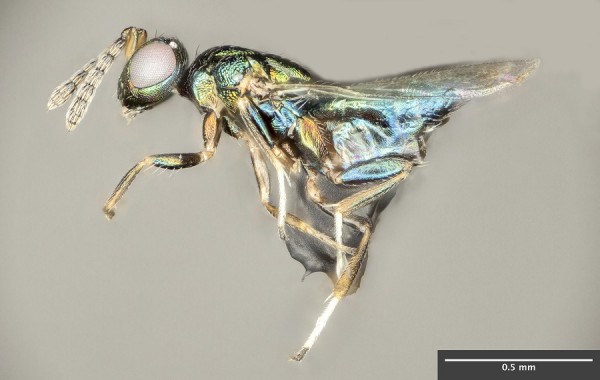By Ana Verayo, | January 27, 2017

The crypt-keeper wasp, Euderus set. (Ryan Ridenbaugh and Miles Zhang/Rice University)
Scientists have discovered a new insect species that is apparently a parasite of other parasites, killing its host victim wasp in the most violent and gruesome manner possible.
Like Us on Facebook
This parasitic wasp is known as the Euderus set. It is named after the ancient Egyptian god of violence and chaos, Set. It targets and parasites on the crypt gall wasp.
Researchers from Rice University describe this new parasitic wasp as a "hyper parasite" since it feeds on the crypt gall wasp that is also a parasite species as well. The Eudurus set is also known as the crypt keeper wasp.
The crypt gall wasps infest oak trees, where they nest their larva in the form of galls. This does not heavily impact the trees' health or its branches and twigs, but galls can still cause some weaker trees to die due to heavy infestation.
In new studies published in two separate scientific journals, scientists were able to determine that the E. set is native to the southwestern United States. They examined and analyzed how the crypt keeper wasp infests the crypt gall wasps.
The E. set infests the larva of the crypt gall wasps where they emerge in the most unique and horrifying way.
The female crypt keeper wasp lays its eggs into the galls formed by the crypt gall wasps, originally intended for the gall wasps' larva. Then the E. set's larva will mature inside the galls, feeding and growing inside the larva host. Not only this, but the E. set also makes the entry hole of the gall to become smaller so that their host will have a hard time to escape when they mature.
When springtime comes, the mature gall wasp would be set to come out of its gall. However, the E. set will kill it immediately its head gets trapped in this small hole.
The crypt keeper wasp will now devour its host's body inwards and then emerges from its host's head case, finally out of the gall.
These new studies are published in the journals ZooKeys and Proceedings of the Proceedings of the Royal Society B.
-
Use of Coronavirus Pandemic Drones Raises Privacy Concerns: Drones Spread Fear, Local Officials Say

-
Coronavirus Hampers The Delivery Of Lockheed Martin F-35 Stealth Fighters For 2020

-
Instagram Speeds Up Plans to Add Account Memorialization Feature Due to COVID-19 Deaths

-
NASA: Perseverance Plans to Bring 'Mars Rock' to Earth in 2031

-
600 Dead And 3,000 In The Hospital as Iranians Believed Drinking High-Concentrations of Alcohol Can Cure The Coronavirus

-
600 Dead And 3,000 In The Hospital as Iranians Believed Drinking High-Concentrations of Alcohol Can Cure The Coronavirus

-
COVID-19: Doctors, Nurses Use Virtual Reality to Learn New Skills in Treating Coronavirus Patients







